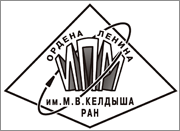|
This article is cited in 2 scientific papers (total in 2 papers)
To the 55th anniversary of the discovery of stratospheric aerosol layers from space: volcanoes and climate problems (Dedicated to the 65th anniversary of the Keldysh Institute of Applied Mathematics and its achievements in manned cosmonautics)
T. A. Sushkevich
Abstract:
The purpose of this paper is to draw attention to a class of large problems of aerospace remote sensing and global monitoring of the Earth's climate. In June 2018, the 55th anniversary of the FIRST scientific experiment in the history of world science, carried out by cosmonauts on manned «spacecraft-sputnik», is celebrated. It was the FIRST scientific experiment on remote sensing of the Earth from space. Stratospheric aerosol layers formed due to the powerful eruptions of Agung volcano in Bali in 1963 were discovered. The eruptions of Agung volcano in 2017-2018 reminded of the pioneering achievements of Soviet cosmonauts and scientists in the exploration of space. Guided by the experiment G. V. Rosenberg. This paper is devoted to the 65th anniversary of the Keldysh Institute of Applied Mathematics, which 55 years ago in June 1963 provided the ballistic calculations of spacecraft «Vostok-5« and «Vostok-6» and the successful flight of Soviet cosmonauts V. F. Bykovsky and V. V. Nikolaeva-Tereshkova — the first woman-cosmonaut.
Keywords:
Agung volcano, stratospheric aerosol layers, remote sensing from space, manned space exploration.
Citation:
T. A. Sushkevich, “To the 55th anniversary of the discovery of stratospheric aerosol layers from space: volcanoes and climate problems (Dedicated to the 65th anniversary of the Keldysh Institute of Applied Mathematics and its achievements in manned cosmonautics)”, Keldysh Institute preprints, 2018, 125, 32 pp.
Linking options:
https://www.mathnet.ru/eng/ipmp2484 https://www.mathnet.ru/eng/ipmp/y2018/p125
|

| Statistics & downloads: |
| Abstract page: | 185 | | Full-text PDF : | 78 | | References: | 27 |
|




 Contact us:
Contact us: Terms of Use
Terms of Use
 Registration to the website
Registration to the website Logotypes
Logotypes








 Citation in format
Citation in format 
